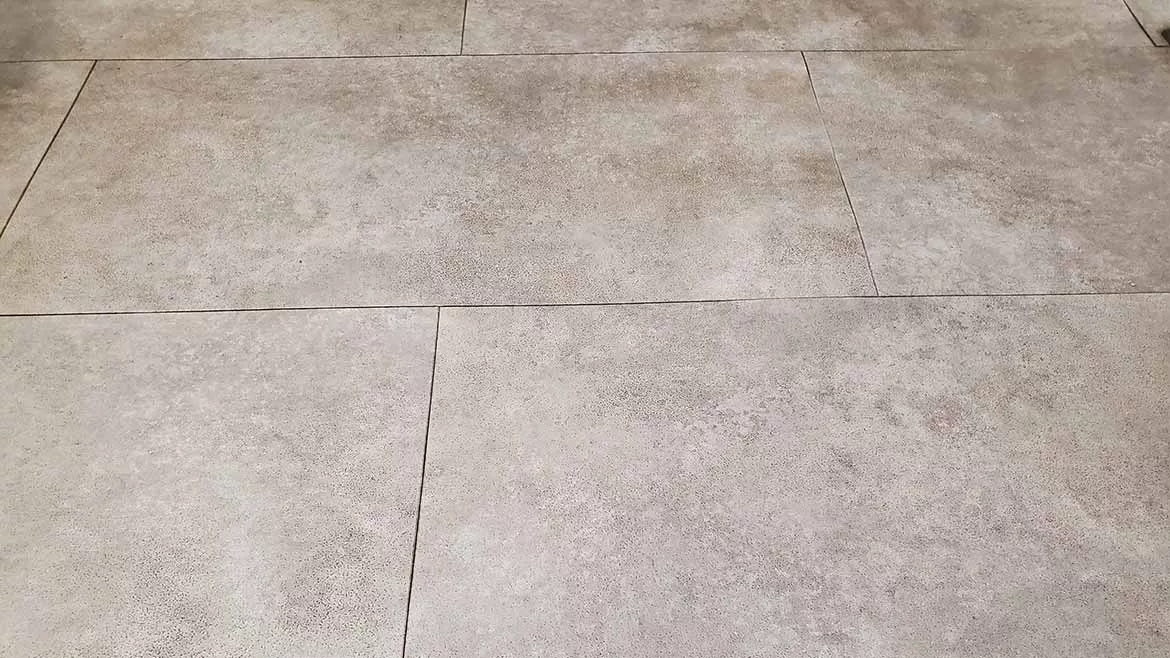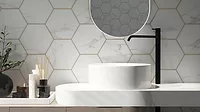How to Successfully Achieve Credit Card Widths on Joints and 50% Offset Requirements on Tile Installations

This 12” x 24” tile with 1/32” grout joints and a 50% offset looks good, but not every installation using this format will be acceptable.
Photo: Scott Carothers.
Many times, tile mechanics are asked to complete an installation that does not follow tile industry standards, methods and best practices. If the end user is not happy with the results, the installer can be held accountable and may need to replace the work at his or her expense. However, sometimes there are exceptions.
The American National Standards Institute (ANSI) provides guidance in several areas as follows.
A108.02-4.2.2 Substrate flatness for tiles 15 in. (0.38 m) or longer: For tile with at least one edge 15 in. (0.38 m) or longer, the substrate shall have a maximum permissible variation of 1/8 in. in 10 ft. (3 mm in 3 m) from the required plane, and 1/16 in. variation in 24 in.(2 mm in 3 m) when measured from the high points in the surface.
A108.02-4.4 Pressed floor tile and porcelain tiles with a grout joint 1/8 in. (3 mm) to less than 1/4 in. (6 mm), the allowable lippage is 1/32 in. (1 mm).
A108.02-4.5 In no circumstances shall the grout joint be less than 1/8 in. (3 mm) for pressed floor tile and porcelain tile.
A108.02-4.5.1 For running bond/brick joint patterns utilizing tiles (square or rectangular) with any side 15 in. (0.38 mm) or longer, the grout joint shall be, on average, a minimum of 1/8 in. (3 mm) wide for rectified tiles.
A108.02-4.5.2 For any running bond/brick joint or any other offset patterns utilizing tiles (square or rectangular) where the side being offset is 15 in. (0.38 mm) or longer, only patterns with an offset of 33% or less shall be specified. If a pattern with an offset greater than 33% is desired, the specifier and owner must approve a mock-up and the resulting lippage.
The attached image shows the installation of a 12” x 24” rectified porcelain tile with a grout joint that is slightly larger than 1/32” rather than the ANSI standard requirement of a minimum joint width of 1/8” and an offset of 50% rather than the standard requirement of a 33% offset.
The initial thought would be that this installation does not meet the ANSI standards which it does not. However, in this case, the floor was even better than the required 1/8” in 10’, the tile was extremely flat, showing no warpage, and the installer did an excellent job. The image does show some slight lippage along the tile edges, but it is significantly less than the allowable 1/32”.
Learn more about methods and products for installing tile
If all conditions are like those above, a talented installer can make this work, but almost perfect conditions do not occur often. Be careful when an owner or designer requires credit card width joints with larger offsets. Always construct a mock-up of the desired pattern and get a signature and date from the appropriate party. Better safe than sorry.
Looking for a reprint of this article?
From high-res PDFs to custom plaques, order your copy today!







